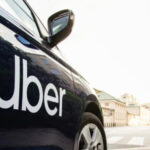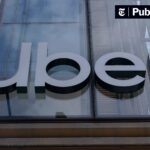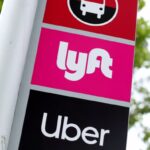My recent journey to Lagos provided ample opportunity for firsthand observation of Uber’s struggle within the city. The issue arose the moment my feet touched the tarmac at Murtala Muhammed International Airport, located in Ikeja. From experience, requesting an Uber ride in Lagos used to guarantee a car within a blink of an eye. Not this time. I had to wait a whopping 20 minutes for pick up. Contacting the driver, I learned the outrageous delay resulted from his location – Lekki, nearly 50Km away from Ikeja. This erratic dispatching surprised me, spurring the investigation I share with you below.
Uber debuted in Lagos, Nigeria’s bustling commercial hub, less than two years ago. The first year, marked by success and expansion, included a celebrated partnership with car manufacturer Kia and Access Ban. With their support, Uber intended to increase Lagos’ Uber driver count to 3,000 by the end of 2016, a fivefold increase. Lower down payments on new vehicles were instrumental in drawing new drivers in, reducing the initial cost from 200k Naira to 95k Naira. At this point, Uber’s dominance within Lagos didn’t seem threatened. However, the optimistic outlook didn’t last long.
Recent reports indicate a decline in driver satisfaction, primarily fueled by Uber’s decision to cut passenger fees by 40% and sustain their 25% commission on every fare. The fare reduction was likely a strategy to increase ride volume and expand the customer base. However, drivers were not as pleased with the move, urging Uber to reduce their commission to around 15%. Uber’s refusal set off a chain of negative reactions.
Driver discontent led to multiple strikes, affecting service availability. Instances, such as my 20-minute wait at the airport, became more prevalent. Others reported drivers completely boycotting the Uber app and severing ties with the company. The driver’s strikes and boycotts could stem from unfavorable local conditions, especially concerning maintenance and vehicle upkeep costs.
One local driver noted that passengers would prefer using Uber than subject their cars to Lagos’ poorly maintained roads. Adding to the trouble, the unpredictable rise in the Naira’s instability double the cost of purchasing and maintaining a vehicle since 2015.
Uber’s inadequate support for Lagos driversmakes it worse. After the fare cuts, disgruntled drivers visited the local Uber office for clarification, only to find it unstaffed. This absence could lend credence to assertions that Uber might be more interested in profit than market development within Nigeria.
The drivers, however, may also share the blame. There are instances of dishonest drivers exploiting unrecorded trips for personal gains, negatively impacting employer profits. Encouraged by the less stringent conditions of competitors, many are switching platforms. Competitors such as “Taxify,” are capitalizing on Uber’s driver disputes in Nigeria, offering reduced commissions and tempting additional perks.
However, despite these setbacks, Uber’s departure from Nigeria remains highly unlikely. The ride-hailing giant’s superior technological infrastructure, especially its advanced mapping capabilities, promises optimized routes for reduced fares and increased rides for drivers. The firm is hope to recover from current turbulence by engaging drivers in dialogue and negotiation, yielding decisions beneficial to all parties.
As we observe the unfolding drama in Nigeria’s Uber market, it’s essential not to disregard the lessons derived from similar challenges faced by the company in other markets. These experiences showcase the necessity of gained cultural and market insights, a lesson vital for Uber and similar corporations that dominate the Gig Economy today.
This article was updated in 2025 to reflect modern realities.
Discover more from TechBooky
Subscribe to get the latest posts sent to your email.






